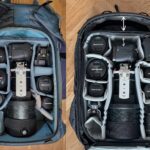Traveling to Europe is an exciting adventure, filled with rich history, diverse cultures, and stunning landscapes. However, if you’re coming from outside the European Union, one of the first practicalities you’ll need to consider is how to keep your electronic devices powered. The key to seamless connectivity? Understanding Eu Travel Adapters.
Navigating the world of travel adapters can seem daunting, but it doesn’t have to be. In most European countries, you’ll find outlets designed for Type C plugs, and often compatible with Types E and F. Let’s break down what this means for you and how to choose the right adapter for your European travels.
Understanding EU Plug Types: Type C, E, and F
The backbone of the EU’s electrical system, the Type C plug, also known as the Europlug, is a 2-pin plug that is ungrounded. Its genius lies in its compatibility. This plug fits into Type E and Type F sockets, which are the standard in a large number of European countries.
Type E and Type F sockets, often referred to as Schuko (Schutzkontakt), are designed for round, recessed outlets. They are very similar but differ slightly in grounding methods. Type E uses a pin on the socket to provide grounding, while Type F uses grounding clips on the side of the socket. The good news is that modern plugs, conforming to the CEE 7/7 standard, are designed to work with both Type E and Type F sockets, accommodating both grounding systems.
The Versatile Type C Plug: Your Go-To for Most of Europe
For travelers seeking simplicity, the Type C plug is often sufficient. It works in most European countries that utilize Type E or F sockets. Its compact size makes it a convenient option. However, it’s important to note that Type C plugs are ungrounded. This is generally fine for many modern devices like phone chargers and laptop adapters, which are often double-insulated and don’t require grounding.
However, the lightweight nature of Type C plugs can sometimes be a drawback. They might occasionally slip out of the wall socket, especially when heavier cords or USB transformers are attached.
CEE 7/7 Adapters: Ensuring Grounded Connections
For devices that require grounding or for a more secure connection, a CEE 7/7 adapter is a robust choice. These adapters are specifically designed to bridge the gap between plugs from other countries (like the US) and European sockets. Being compliant with the CEE 7/7 standard means they are engineered to fit both Type E and Type F grounded sockets reliably.
Navigating Exceptions: Switzerland, Italy, and Denmark
While Type C and CEE 7/7 adapters cover a vast majority of EU countries, there are a few exceptions to be aware of:
- Switzerland (Type J): Switzerland uses its own Type J plug, which is similar to Type C but has an additional grounding pin. A standard EU adapter might not fit, so a specific adapter for Switzerland (Type C to Type J or universal adapter with Type J) is needed.
- Italy (Type L): Italy primarily uses Type L sockets, although Type F (Schuko) sockets are increasingly common, especially in newer buildings and tourist accommodations. Older Italian Type L sockets require a specific Type L adapter. For modern accommodations, a standard EU adapter (Type C or CEE 7/7) will likely suffice.
- Denmark (Type K): Denmark primarily uses Type K sockets. While Type C plugs can often be forced into Type K sockets, it is not ideal and a specific Type K adapter is recommended for a secure and safe connection.
Universal Adapters: Convenience vs. Practicality
Universal travel adapters, promising to be the “one-size-fits-all” solution, are available. While convenient in theory, they can be bulkier and sometimes less reliable than dedicated adapters. They also tend to be heavier, potentially pulling themselves out of wall sockets. For travelers prioritizing lightweight and reliable solutions, individual adapters or a combination of Type C and CEE 7/7 adapters might be more practical.
Conclusion: Choosing the Right EU Travel Adapter
For most trips within the EU, a simple Type C adapter (Europlug) will handle your basic charging needs for phones and laptops. For devices requiring grounding or for travel to countries like Switzerland, or older parts of Italy and Denmark, a CEE 7/7 adapter or a universal adapter that explicitly includes Type J, L and K compatibility offers broader compatibility. Understanding these nuances ensures you stay powered up and connected throughout your European journey, without unnecessary hassle. Pack smart, and enjoy your travels!
